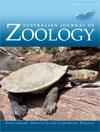Extant mammals are divided into sub- and infraclasses that are distinguished by their mode of reproduction. The monotremes lay eggs, the marsupials give birth to altricial young that typically develop in a pouch, and the eutherians have prolonged in utero development, resulting in well developed young at birth. The three groups exhibit what appears to be a nice progression of evolution towards the well developed newborn young of eutherian mammals. However, marsupials do not represent a step in the progression of producing well developed young, but maintain a reproductive strategy that has evolved to prosper in their specific niche. The production of undeveloped young with increased development in the pouch (or counterpart) provides specific advantages to those species living in diverse environments. The evolution of this reproductive strategy provides a clever solution to the uncertain and often adverse conditions encountered by many species, and the survival of the developing young in a pouch containing potentially harmful microorganisms is truly remarkable. In this review, we explore the unique features of the pouch, highlight the research questions that remain unanswered regarding this unique marsupial attribute and discuss the advantages of the marsupial reproductive strategy and the potential role of the pouch in mammalian diversification.
How to translate text using browser tools
7 November 2012
The marsupial pouch: implications for reproductive success and mammalian evolution
Melanie J. Edwards,
Janine E. Deakin
ACCESS THE FULL ARTICLE

Australian Journal of Zoology
Vol. 61 • No. 1
June 2013
Vol. 61 • No. 1
June 2013




